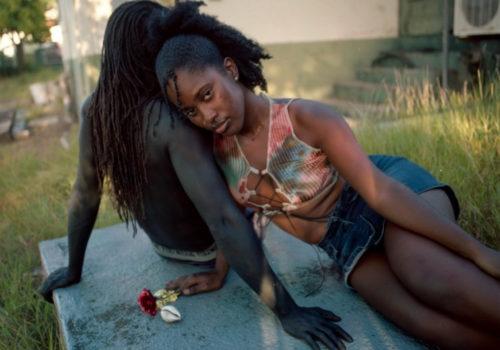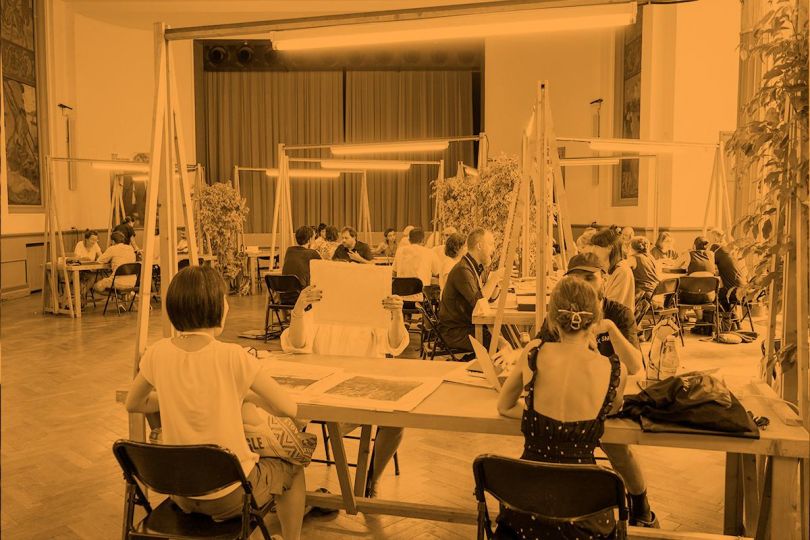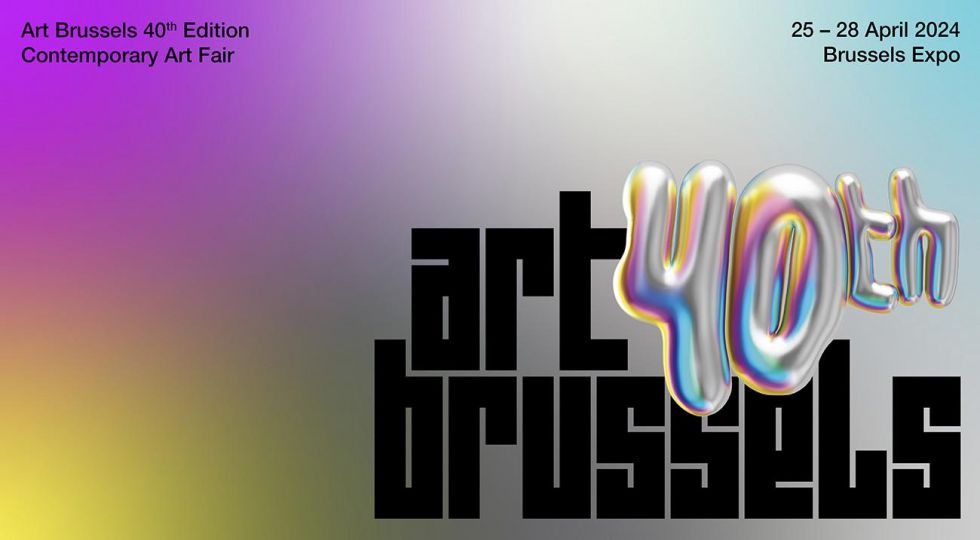In this second contribution, we look at the young talents of Haute Photographie, names that represent a new and refreshing vision of the world. Names that are considered promising today, but which tomorrow may be regarded as essential.
Kevin Osepa (Curacao, 1994) (Images 1-4)
Kevin Osepa is probably one of the most difficult to grasp young talents in the group, and precisely for that reason a very fascinating artist. His story reflects on his country of origin (Curacao) a former Dutch colony, telling the story of colonisation, decolonisation, how the population learned to cope with oppression, faith and self-expression.
He cannot be pigeon-holed under one heading; he takes a multitude of approaches and diverse media. His talent has already received considerable recognition, e.g. his film was awarded best Dutch short film in 2022, and his project Klof is highly sought after by galleries and museums – watch out: deserved international recognition may be waiting for him.
The work of Photographer and filmmaker Kevin Osepa reflects on the identity of Afro-Caribbean youth in a post-colonial world, in which the reality of everyday life and the magical world of the Caribbean religion Brua coexist. Osepa connects these worlds with ideas about masculinity and gender in Curaçao and Dutch society. While the themes he explores are autobiographical, his work can also serve as a quasi-anthropological study. Using different experimental techniques he creates visual stories that explore themes such as religion, African diaspora, and family.
Laura Bonnefous (France, 1988) (Images 5-8)
Through a mixed-media image that focuses on the spaces she encounters, or the ones she recreates, Laura Bonnefous offers us a poetic depiction of reality. Her projects are cross-cutting between personal project and commissions through photography and film.
Inspired by the relationship that mankind maintains with our contemporary landscape, but also captivated by the mutation our society goes through, she studies and deciphers our humanity’s mythologies in order to depict them with sensitivity. She recreates these elements from reality with her own spaces : metaphorical and personal universes. Both pictorial and sculptural, her work tends to abstraction, and thus, proposes a new archeology of our contemporary codes.
She developped her mixed-media practice by studying at the Beaux Arts de Paris, the Otis College of Art and Design of Los Angeles and Gobelins, l’école de l’image in Paris.
She’s part of the 30 under 30 Women Photographers in 2015. She won different prizes, such as the Bourse du Talent, the Prix Picto or the Creative Directors Prize. She also ended up a finalist for the Prix de l’Académie des Beaux Arts de Paris and the BMW Residency.
KILAMBA
Discovering the existence of the city of Kilamba in Angola, was an electroshock for me. I wanted to work in this place, both anchored in a geopolitical history at the heart of current issues and very singular in its construction and relationship with color. Located south of Luanda and built with Chinese funding, it creates an almost fictional area in the middle of the Angolan landscape: architecture and floating atmosphere are almost unreal… The need to explore these grounds, to understand the social and structural complexities was essential to me. The question was then to try and bring out a kind of spontaneous archeology of the territory, while carrying out a work of portrait, revealing the relations between Men and this Environment. Through colors and shapes, I wanted to explore and reinvent this topic between Africa and China.
Sara Punt (Dutch, 1994) (Images 9-12)
Sara Punt strongly believes that creativity lives in the spaces between your thoughts. Her work, characterised by strong black and white contrasts and bodies that take on abstract shapes, are the product of a personal research. A search that she carries out together with her models. The past two years Punt has focussed on how people look at themselves and at others. The current social norm is to always be sexually attractive. As a result, bodies are often overly sexualised. Punt opposes this norm.
Abstraction is an important part of the goal Punt wants to achieve with her work: acceptance of the body. Every person goes through something traumatic in their life, that affects the way they look at their own body or that of others. This can be the result of bullying, (sexual) abuse, injuries, upbringing, social media, or any other experience. Because Punt depicts the body in the way she does, turning it into an independent shape or work of art, she creates a certain distance between person and body. This process contributes to disconnecting the body from the ideas that have been projected onto it. By doing so, the body can be accepted and turned into the artwork it is.
Sam Warnaar (Dutch, 2000) (Images 13-16)
Sam Warnaar is an autonomous Dutch photographer and Haute talent 2023. She captures her fascination for the female body, combined with her love for abstraction, composition and minimalism. Sam shows the power of vulnerability and believes that when you are vulnerable, the inner strength can grow. She believes in the power of creating together: model and photographer and is inspired by her models who expose themselves to her.
Alida van Gool (Dutch, 1986) (Images 17-20)
Alida van Gool is one of Haute talents 2023. She plays with the fact that humans continuously interact with their environment. We observe the world around us and use our perceptions, thoughts and feelings to interpret what we experience. With the help of associations, we give meaning to our experiences and create subjective realities. The result often contains a strange kind of tension and agility; as if everything just came together and could fall apart or change at any moment. It walks the fine line between dissociation and integration.
Asha Swillens (Dutch, 1994) (Images 21-24)
Asha Swillens joins the Kahmann Gallery LAB. Asha is a photographer and digital artist/image maker. Her work is to a large extent influenced by her fashion study in The Hague and Antwerp, enabling her to develop her own artistic signature. She mainly used mixed media and designed garments by making fashion-collages. Since 2020 her focus is on photography rather than fashion. Photography allowed her to push the boundaries of her former way of constructing ideas based on the shapes of garments and lead her to focus on the aesthetics of an image instead.
Swillens’ extensive research of 17th-century paintings sparked a fascination with their use of lights and shadows alongside the combination of mostly black and white clothing on a dark background. Those paintings combine a heavy contrast with ‘ton-sur-ton’ tones to use these influences a specific feel. Work that feels like seeing a memory from a long time ago, whilst being modern and new – elements and atmosphere she adopted herself. Consequently, Swillens’ work questions the border of reality and fiction as all her images are a digital collage – a non-existing composition of real elements.
Joep Hijwegen (Dutch, 1994), (Images 25-28)
Bright coloured lights in the dark, reflections and silhouettes in a rainy city. Joep Hijwegen’s work exudes nostalgia, love, mystery and terror. For the photographer, colours each have their own emotional meaning. However, this meaning is ambiguous: there is a duality between positive and negative. For instance, blue stands for peace, but also for depression, red stands for love, but also for danger. Through the context in which Hijwegen applies colours in his work, he gives them meaning. His photographs are expressions of feelings that cannot be described with words, but can be felt through images.
Hijwegen’s photography can be described as Existential Street Photography. His work says more about himself, than about the street scenes it depicts. He started photographing as a way of coping with his fear of ‘fading away’ in the business of modern life. He felt he couldn’t connect to anyone or anything, which made him feel distant to life. With this distance, came both an appreciation of observing life, as well as a frustration of not being able to connect to it. Photographing became a way for Hijwegen to capture his alienation. It also allowed him to show his perspective to others and feel more noted and understood.
Hijwegen’s photography very quickly became not about preserving moments but about creating them. It is this powerful feeling of being able to create meaning and beauty out of randomness that drives his passion to this day.
Fleur Huijsdens (Dutch, -) (Images 29-32)
Haute Rotterdam presents Fleur Huijsdens. Her practice as a documentary photographer is to make the uncomfortable comfortable. Focussing on absurdities and disabilities. She tells other peoples stories, through portraiture and still lives. Not only fascinated by portraying people but also animals. With her cat series, she attracts attention, brings a smile and, above all, portrays the human in her subject.
Haute Photographie Rotterdam 2023
8-12 Fe b r u a ry
Keilepand, Keilestraat 9 , Rotterdam
John Devos
johndevos.photo(ad)gmail.com
















